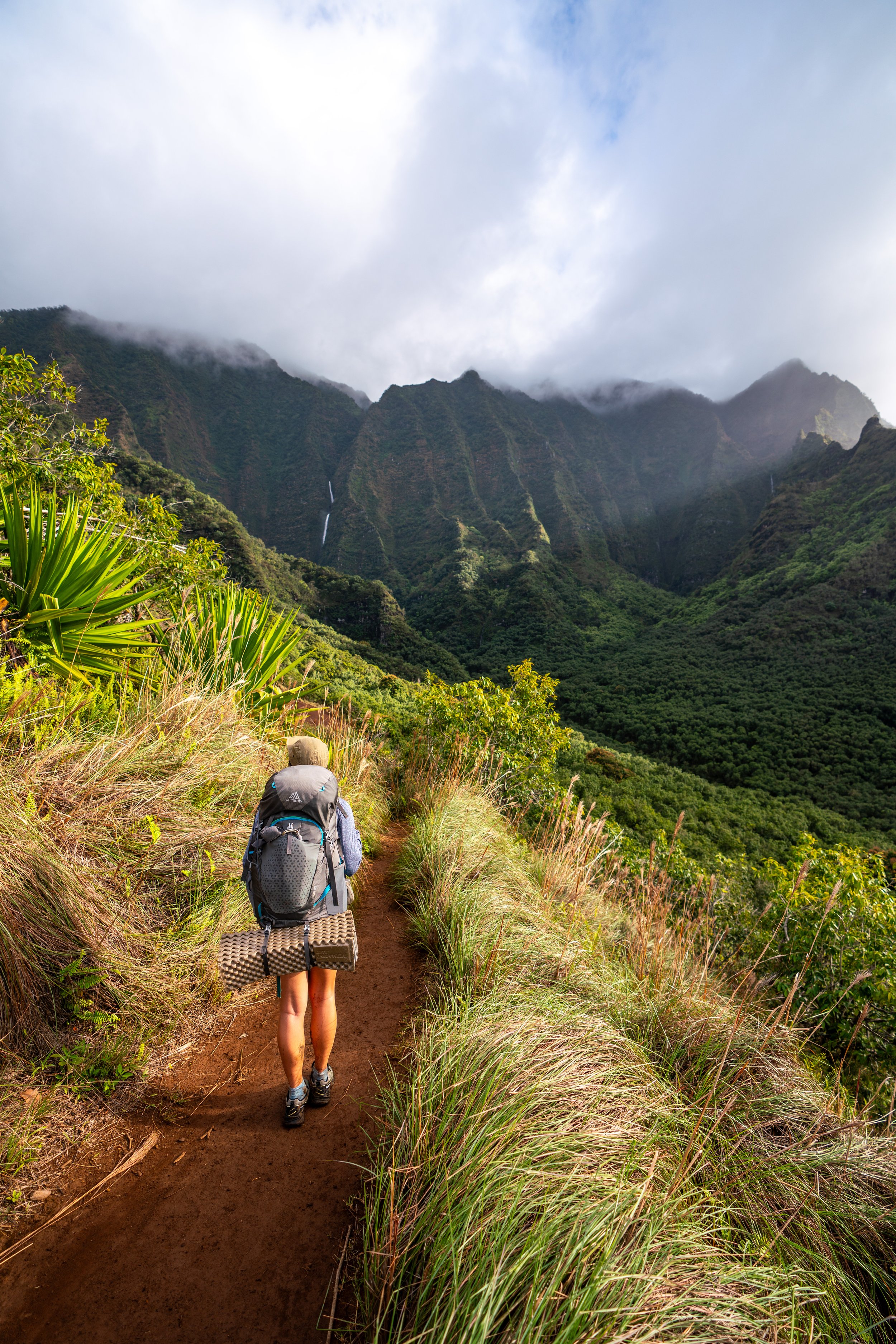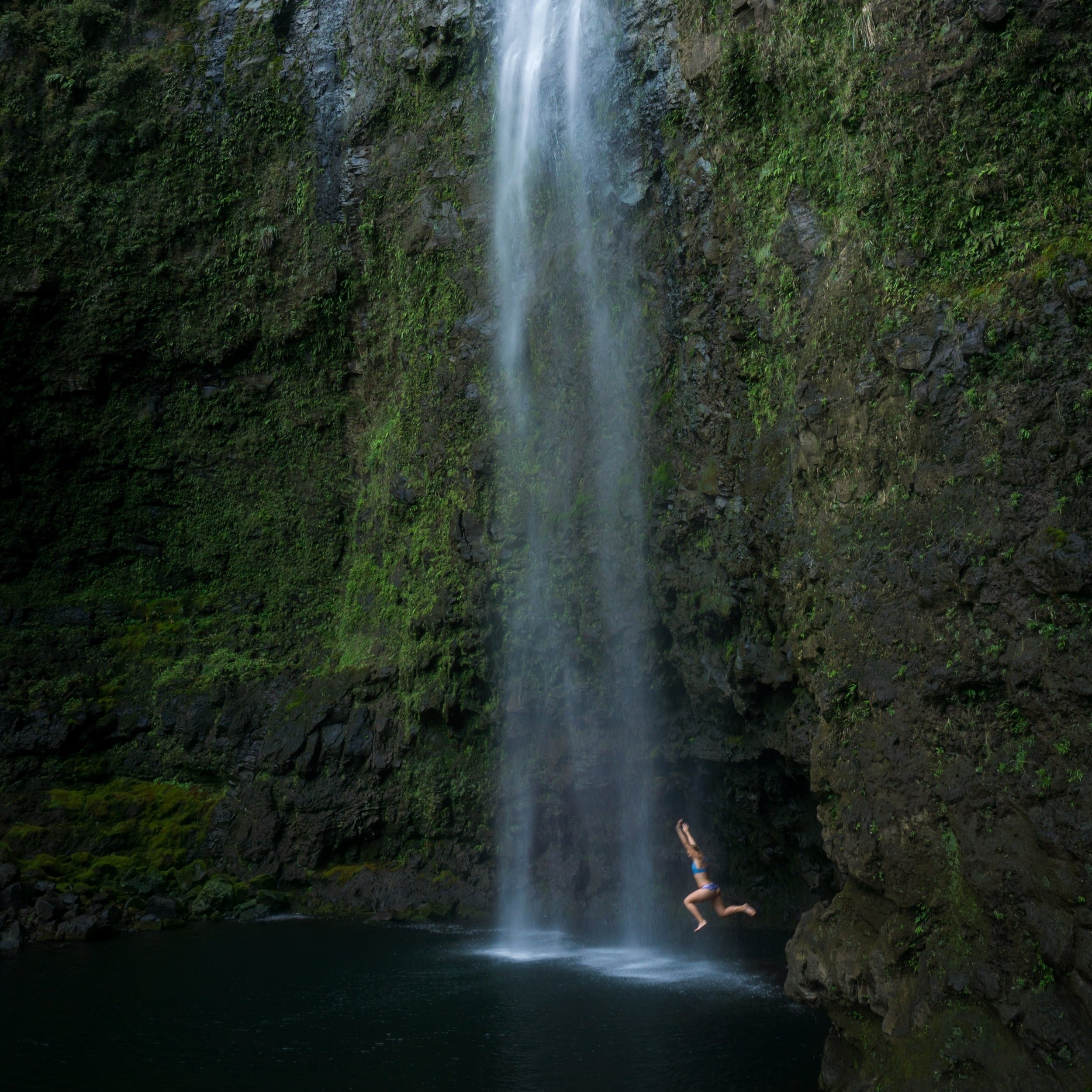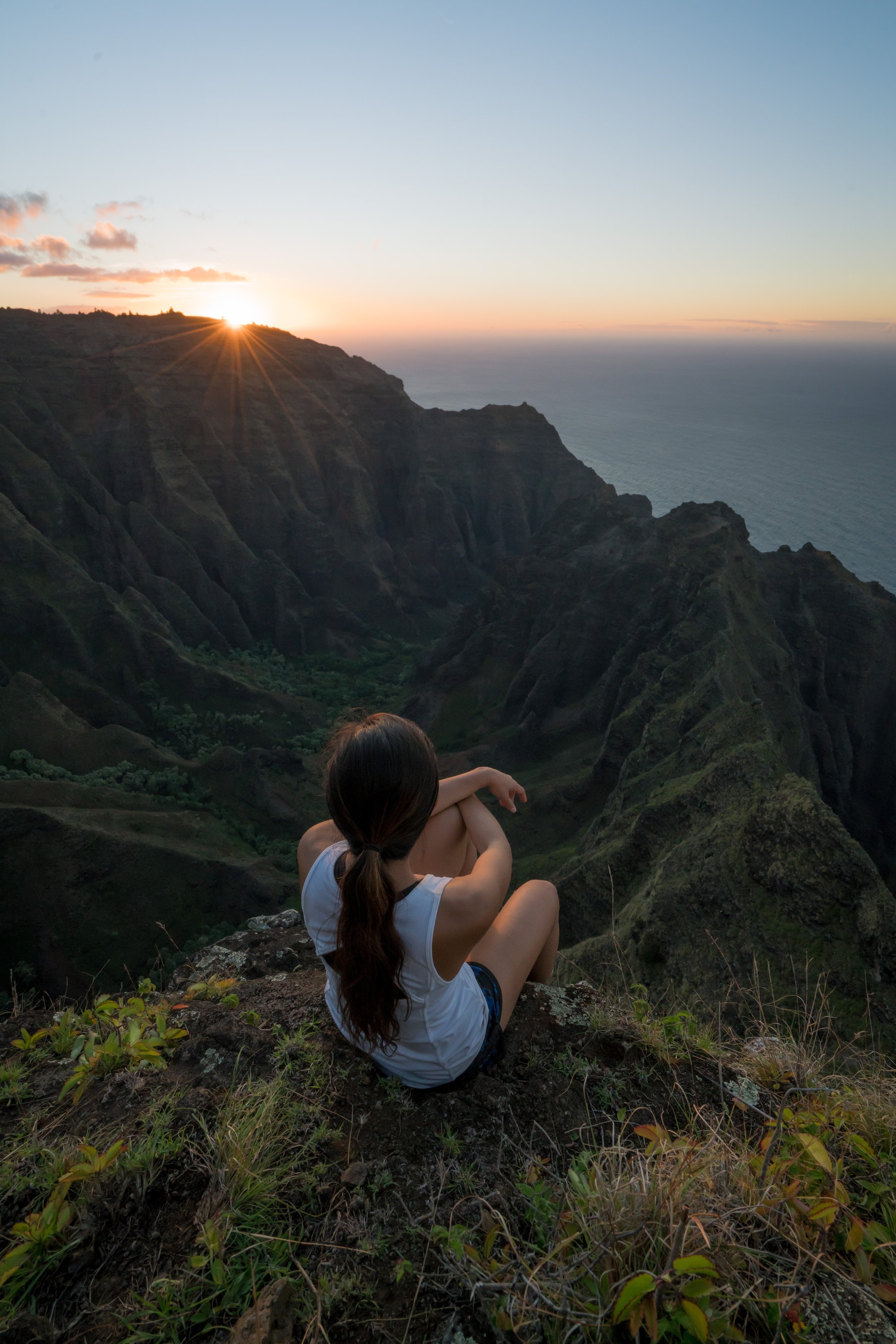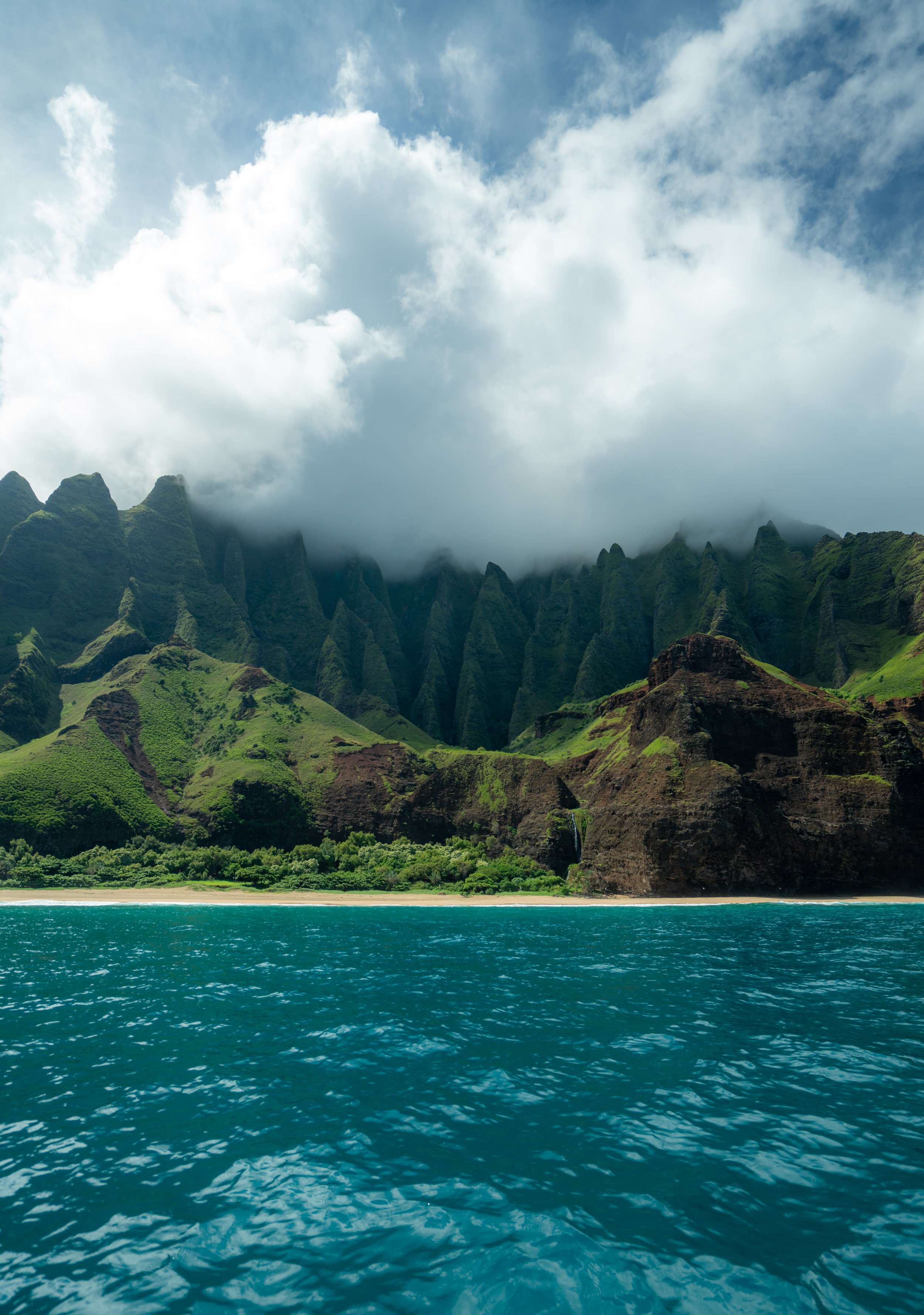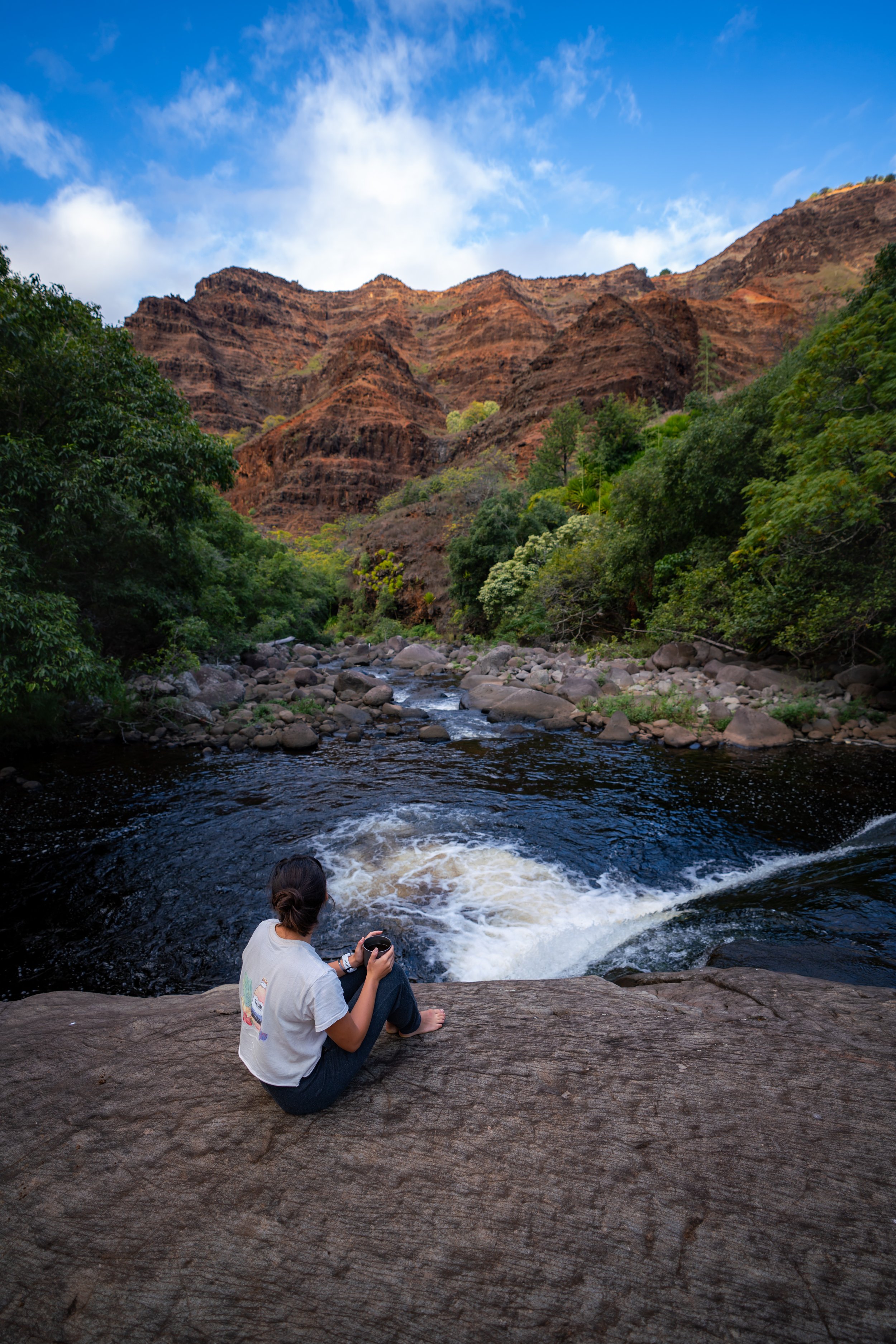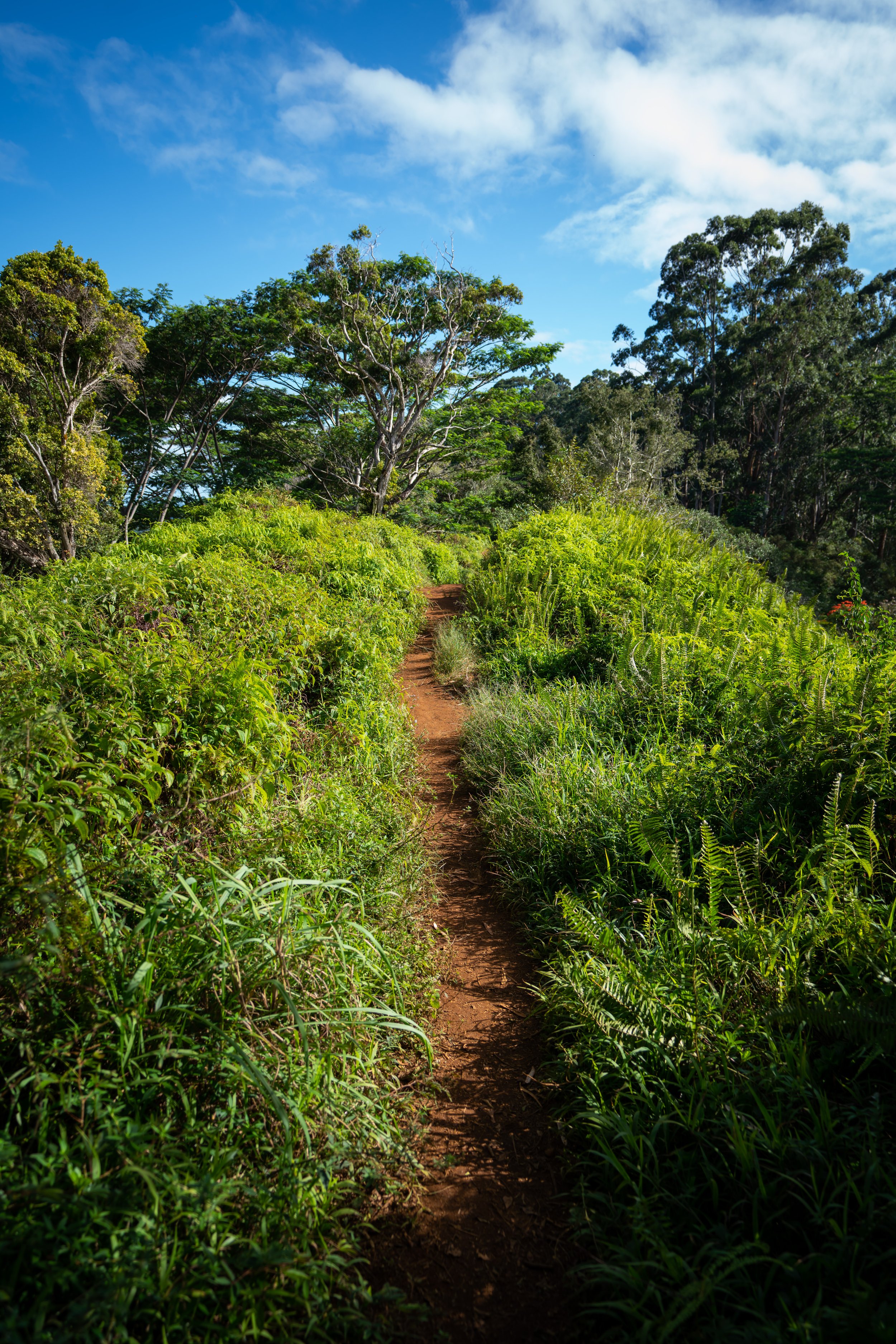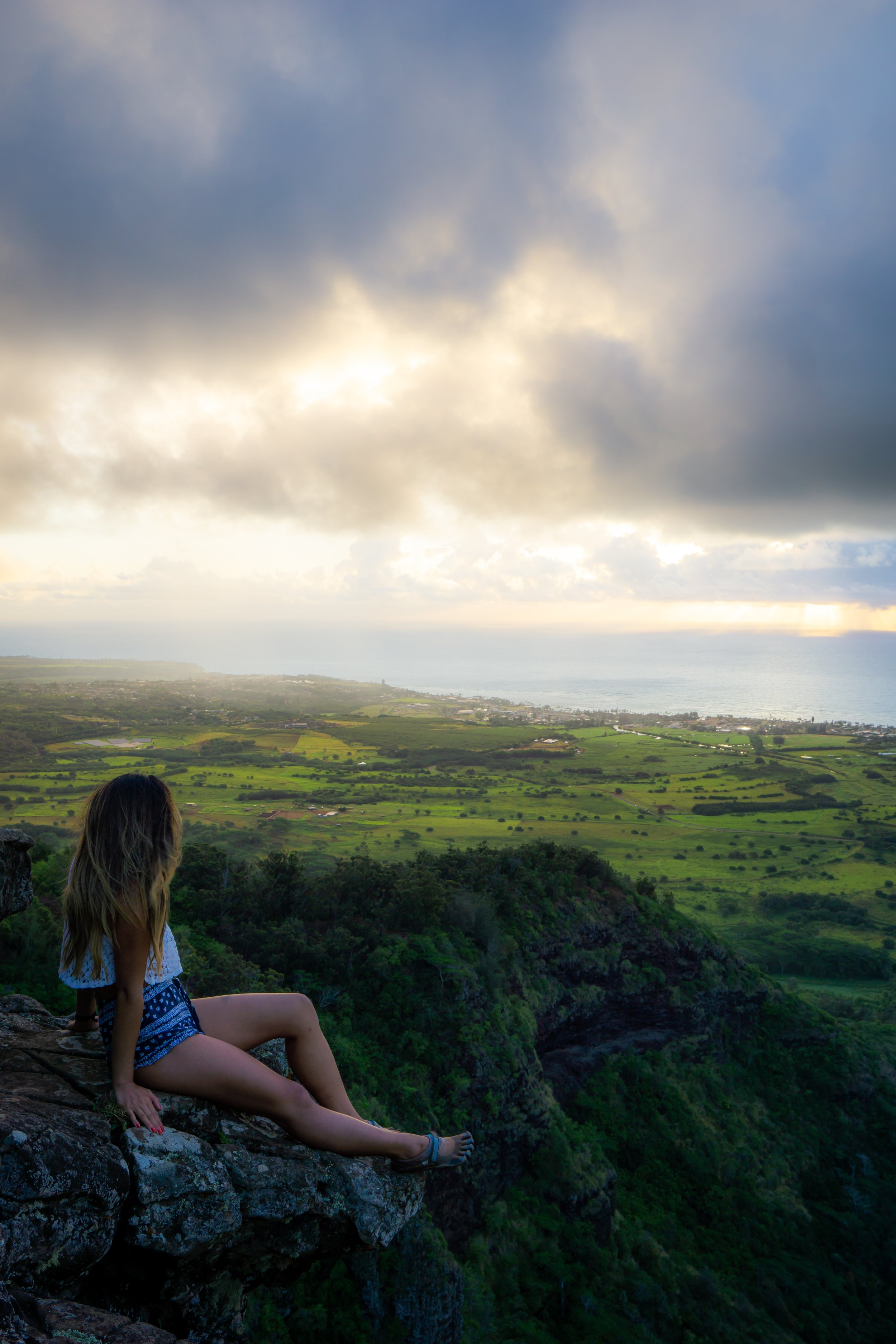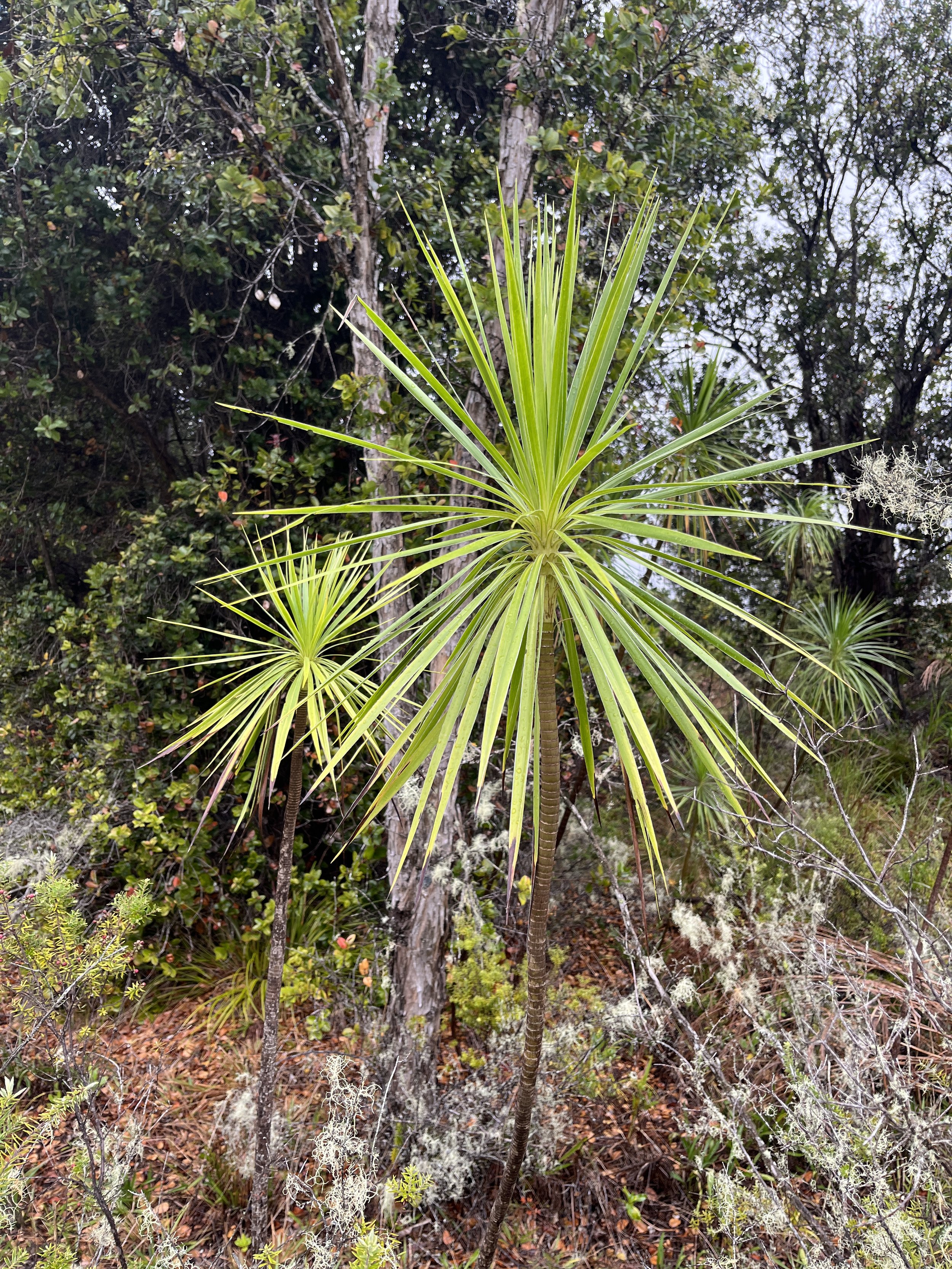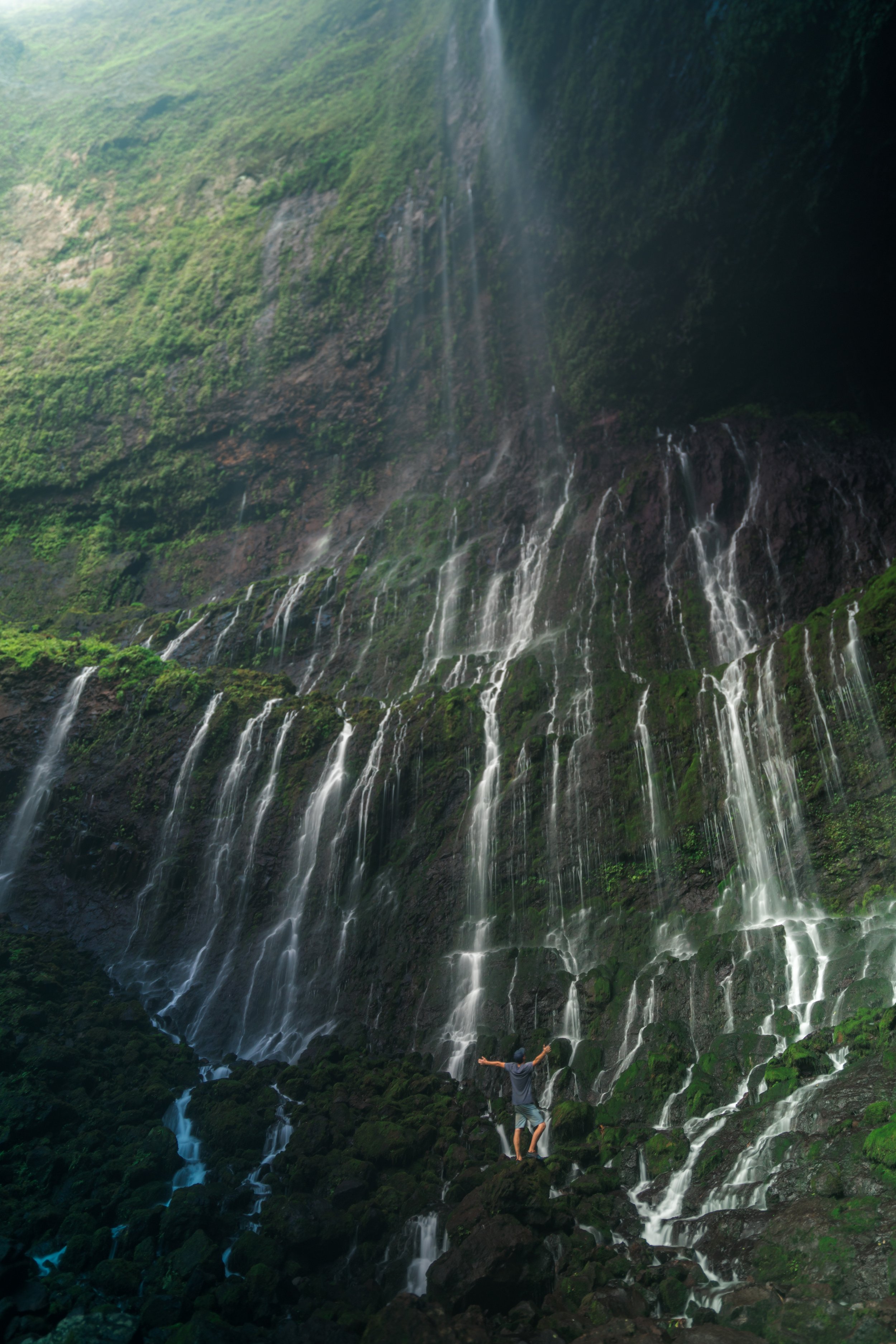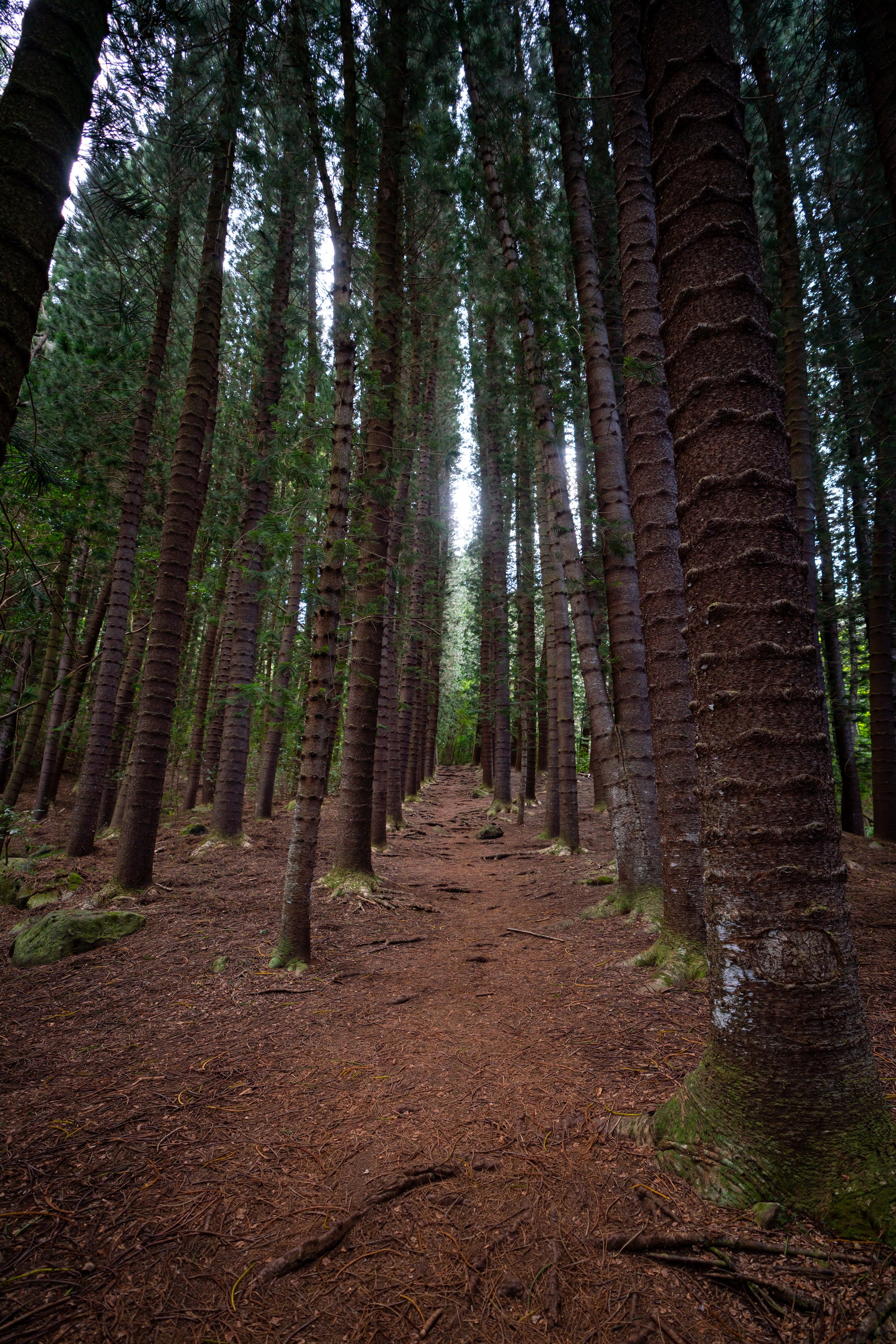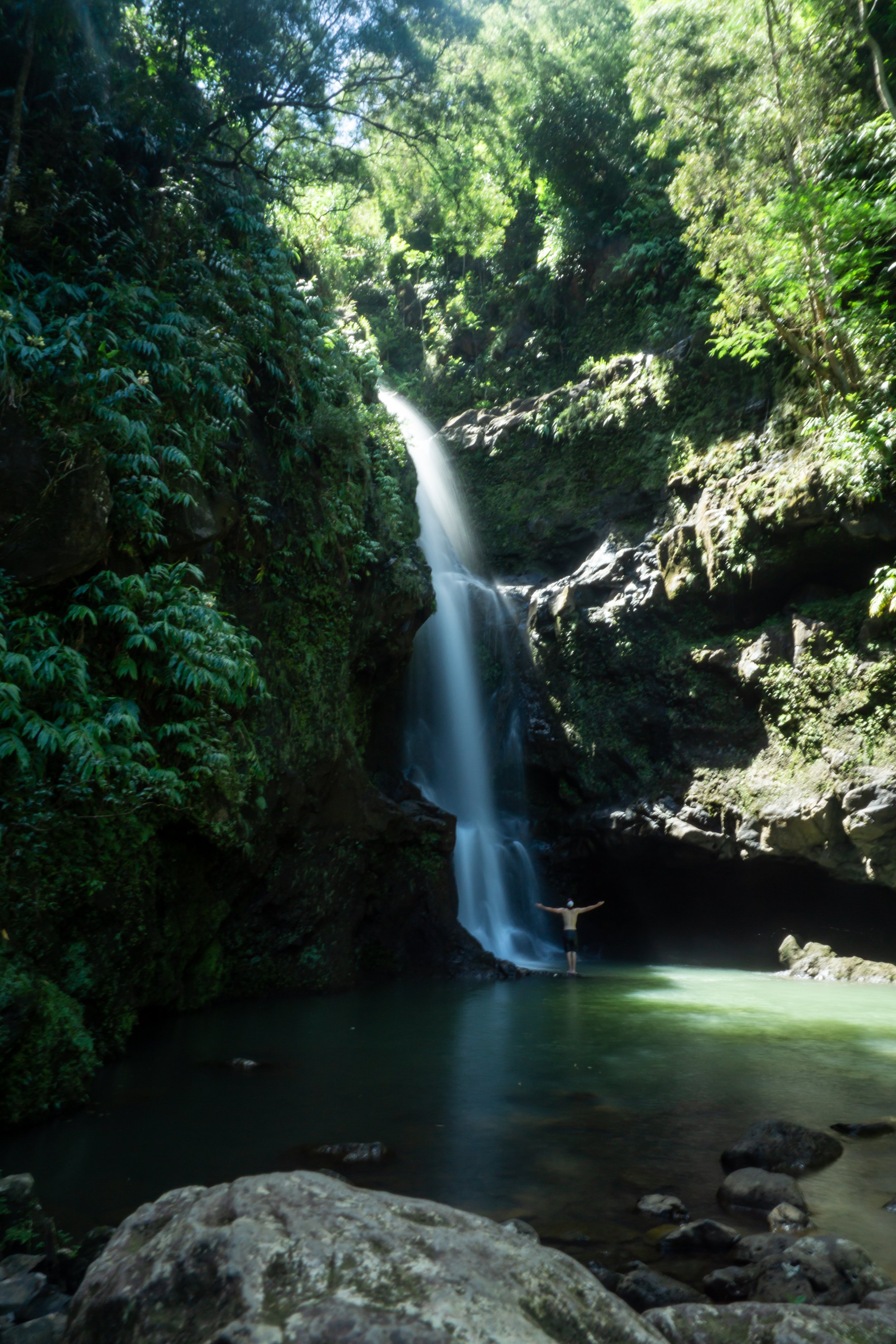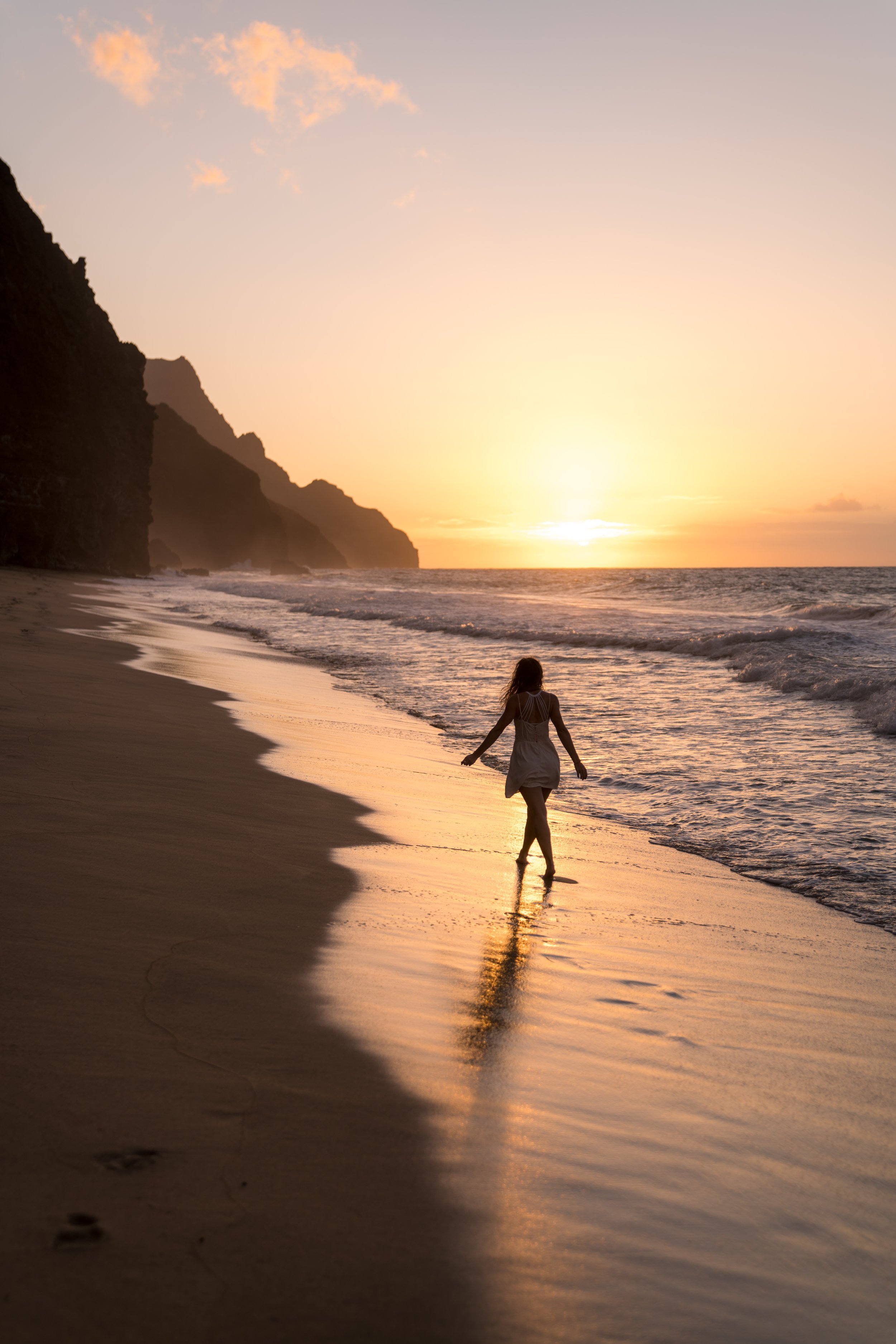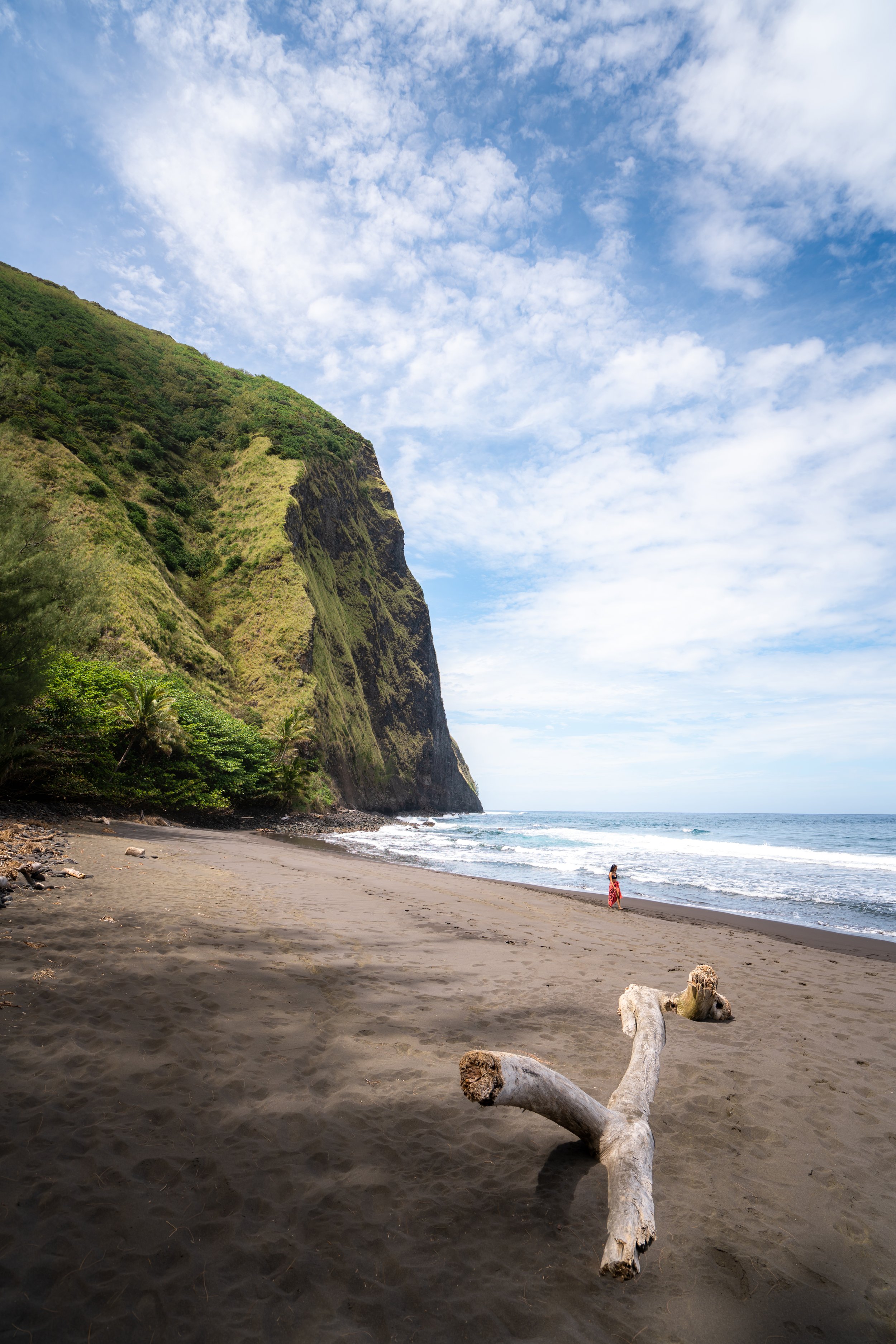Visiting the Limahuli Garden & Preserve on Kauaʻi’s North Shore
Distance: 0.75 miles / 1.2 km
The Limahuli Garden and Preserve, also called the Limahuli National Tropical Botanical Garden, is a North Shore hidden gem on Kauaʻi, as most who visit the area drive right past to get to Hāʻena State Park and the trails and beaches within, just down the road.
Nevertheless, the Limahuli Botanical Garden is unique in that it is one of the best places in all of Hawaiʻi to learn about both indigenous Hawaiian culture and rare and endangered Hawaiian plants that most people, including local residents, never get the opportunity to see.
By this, I mean that when you drive around the islands, the vast majority of plants you will see are not supposed to be in Hawaiʻi. They are non-native introductions, with the exception of a few upper-elevation drives, such as Saddle Road on the Big Island or Haleakalā Highway on Maui.
However, the Limahuli Garden and Preserve is one place where the amazing efforts of those who work there fight back against these invasive plants to give Hawaiian plants a place where they can truly thrive!
For these reasons, I highly recommend visiting Limahuli on your trip to Kauaʻi, as the tour is truly a fun and kid-friendly adventure for all!
Book Here: Limahuli Garden Tours
Limahuli Botanical Garden Parking
Parking for the Limahuli Garden Botanical Garden is located in a small parking lot just before the visitor center.
That being said, I highly recommend booking a reservation in advance if you want to park within Limahuli, as finding a parking spot on a walk-in reservation is very unlikely.
However, if you don’t plan to park, you can alternatively take the shuttle from the Waipā Park & Ride in Hanalei (Hāʻena State Park Shuttle) to Hāʻena State Park and walk in.
Book Here: Hāʻena Advanced Reservations
Note that a Limahuli Botanical Garden parking reservation is not valid for Hāʻena State Park, meaning that you cannot get a botanical garden reservation and hike on the Kalalau Trail while parked there; you will be towed!
Google Maps Directions: Limahuli Garden & Preserve
My Hawaiʻi Hiking Checklist
Osprey 3L Water Bladder - The Osprey 3L water bladder is the most universal hiking and backpacking water bladder on the market, and it’s my go-to because of the slide-off seal that allows it to be quickly filled from the top. Additionally, individual parts are easily replaceable, such as the bite valve.
Blister / Heel Protectors - I swear by these cheap, amazing heel protectors to prevent blisters for nearly every kind of hiking and backpacking that I do!
Black Diamond Headlamp - Personally, I recommend the Black Diamond Storm because it is one of the brightest, lightest, and longest-lasting headlamps on the market—and trust me, the weight-to-battery-life ratio really does matter!
Hiking / Trail Running Shoes - Depending on the type of trail, I prefer to use either the Keen Targhee for longer, more rugged hiking or the HOKA Zinal Trail-Running Shoe for lighter, less intense trails. In either case, both have been amazing to me for many years across countless environments, and both can be found in men’s and women’s sizes. - (Men’s Keen / Women’s Keen) (Men’s HOKA / Women’s HOKA)
Waterproof Rain Shell - You never know when it may rain, and I’ve learned over the years that a rain shell is far better than a rain jacket. By this, I mean that it’s best to have something that the water will roll right off of, which is why I recommend the Patagonia Torrentshell 3L available in both men’s and women’s sizes.
High SPF Sunscreen - Packing high-SPF sunscreen is a must for long days outside!
Walking the Limahuli Garden Trail
The Limahuli National Tropical Botanical Garden tour can either be guided or self-guided.
Personally, I prefer the self-guided tour, so that I can move at my own pace. However, I mostly feel this way because my graduate degree specialized in rare and endangered Hawaiian plants.
That being said, the guided tour is likely the best choice for most visitors, as it is undoubtedly the best way to learn about endemic plants like Māmaki, the native Hawaiian tea, which you otherwise would not have the opportunity to learn about.
Hawaiian Canoe Plants
One of the very first sections on the hike through Limahuli Valley is the Hawaiian canoe plants.
In short, canoe plants are plants that the original Polynesians brought with them to Hawaiʻi when making their voyage from French Polynesia. They did this in order to make life on a new island home more feasible, rather than arriving without any familiar plants.
These included plants for medicinal purposes (Noni), plants for their oil (Kukui), or even plants for their construction ability (Hala/ Bamboo), to name only a few.
Native Hawaiian Forest
Next, the Limahuli Garden Trail enters the native Hawaiian forest, which continues for nearly the entire rest of the trail.
That being said, please be careful and considerate, as many of the Hawaiian species in Limahuli are rare and endangered.
On the upper side of the Limahuli Loop Trail, you can enjoy the best views of Limahuli Valley and the ocean from this vantage point.
At the end of the walk, the Limahuli Garden Trail loops back around to the visitor center.
In all, Limahuli Valley may not be Waimea Canyon in terms of its jaw-dropping views, but it’s truly one of the best places in all of Hawaiʻi to learn about Hawaiian culture and see plants that you would otherwise never have the opportunity to see.
With that in mind, the staff at Limahuli does an amazing job of protecting some of Hawaiʻi’s rarest species, which is why I highly encourage you to leave a donation or, at the very least, a complement to the staff if you had a good time!
Donate: Limahuli Garden & Preserve
Are There Bathrooms at the Limahuli Garden?
Yes, in the parking area before the Limahuli Trail, you can find restrooms to use when you arrive or before you leave.
Native Hawaiian Plants in Limahuli Valley
As with all trails, I love to write about the native Hawaiian plants that you can expect to see when hiking.
However, that’s sort of the whole point of visiting Limahuli Valley, which is why I encourage you to pick up a pamphlet and take your time because there’s so much to learn on this short adventure!
If you would like to learn more about these and many other native Hawaiian plants from across the islands, I encourage you to check out my separate post linked below.
Read My Separate Post: Native Hawaiian Plant Guide
More Kauaʻi Adventures
If you’re interested in reading about some more amazing Kauaʻi adventures, check out my separate posts below!
Best Hotels & Vacation Rentals on Kauaʻi
Since the best things to do on Kauaʻi are located on all different sides of the island, I recommend starting your search on VRBO.
You may want to stay some nights in Poʻipū, some nights in Kapaʻa, and even some nights on the beautiful North Shore, but this way you can plan out places to stay and adventures on all different sides of the island!
Best Way to Book Rental Cars!
I travel quite a bit, and I know firsthand that finding a good rental car deal can be a challenge, but that’s why I recommend comparing all of your options with Discover Cars.
In short, Discover Cars is a well-known, reputable business that allows you to search for the best deal across companies, and they have the best full-refund cancellation policy I’ve ever seen, valid up to 72, or sometimes even 48, hours prior to your reservation!
Book Here: Discover Cars
Visiting Other Islands
If you are visiting Kauaʻi or heading to another island, check out some of my personal recommendations for Oʻahu, Maui, Kauaʻi, Molokai, Lānaʻi, and Hawaiʻi Island (Big Island) in these separate posts.
If you’re trying to decide which island is right for your visit, check out my overview about each island in the post below.
Read My Separate Post: What is the Best Hawaiian Island to Visit?
What is the Best Time of Year to Visit Hawaiʻi?
The weather in Hawaiʻi can often appear to be warm and beautiful throughout the year, but in my experience, there is a lot more to consider when planning what time of year to visit the islands, such as what island you are considering, what sides of each island do you plan to stay, what activities are you most interested in, the wildlife, and countless other nuanced variables that can all impact the type of trip you can expect to have.
For these reasons, I highly recommend reading through my separate article to not only understand my thoughts regarding the best time of year to come to Hawaiʻi but also what you need to consider based on the time of year that you plan to visit.
Read My Separate Post: What is the Best Time of Year to Visit Hawaiʻi?
Safety
All hikes in Hawaiʻi should not be compared to trails outside of the islands, and hikers should exercise due caution on every adventure, given that many are extremely dangerous.
By this, I mean that Hawaiʻi is known for hot, humid weather, steep, dramatic, and unstable cliffs, and flash floods, which can occur without warning. Therefore, it is important that you check the local forecast, understand the physical condition of your entire group, and pack sufficient food and water before attempting any adventure.
Disclaimer
All information provided on this blog is for informational purposes only and is not intended to be a substitute for information or advice from qualified professionals or managing agencies.
Noah Lang Photography LLC makes no representations or warranties regarding the accuracy or completeness of the information provided here, and readers should use their own discretion, judgement, and seek professional advice where it is appropriate.
Furthermore, Noah Lang Photography LLC shall not be held responsible for any injuries, lost individuals, or legal issues arising from the use of information provided on this website, and if applicable, the above safety disclaimer should be referenced to provide a generic overview of the risks involved.
All said, the content on this blog is for the sole use of Noah Lang Photography LLC, and unauthorized use or reproduction of this content is strictly prohibited.
Disclosure
This post is not sponsored.
However, some of the links in this post are affiliate links, which means that I may earn a small commission if a purchase is made through one of those links. This commission comes at no additional cost to you, and I only recommend products that I personally use and believe will add value to my readers. Thank you for your support, which enables me to continue creating more!
To read the full privacy policy, click here.

About This Blog
Noah Lang Photography, also known as @noahawaii, is 100% reader-supported!
I do not accept guest articles or sponsored content of any kind on my blog, which is why, if you enjoy the outdoor and travel content I create, please consider buying me a coffee!
I appreciate your support, which helps me continue to keep this blog alive!












